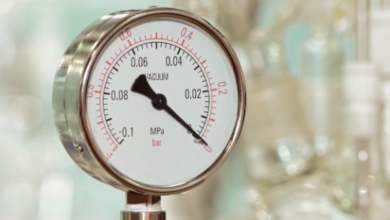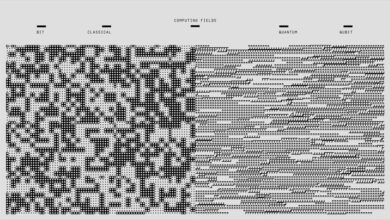Robotic vs. Suction vs. Pressure Pool Cleaners: Which Is the Best for Your Pool?

Maintaining a clean pool is essential for a refreshing swim, and choosing the best pool cleaner can make this task effortless and efficient. With the variety of pool cleaners available in 2025, understanding the differences between robotic, suction, and pressure-side models is key to selecting the right one for your pool. This comprehensive guide compares these three types of pool cleaners, exploring their features, benefits, drawbacks, and ideal use cases to help you decide which is the best pool cleaner for your in-ground or above-ground pool. Whether you prioritize automation, affordability, or heavy-duty debris removal, this article will guide you to the perfect choice.
Why Choose the Right Pool Cleaner?
A high-quality pool cleaner saves time, reduces energy costs, and keeps your pool free of debris like leaves, dirt, and algae. Each type of cleaner—robotic, suction, or pressure-side—offers unique advantages tailored to different pool types, budgets, and maintenance needs. By comparing their functionality, you can find a pool cleaner that aligns with your pool’s size, shape, surface material, and debris challenges. Below, we break down each type to help you make an informed decision.
1. Robotic Pool Cleaners
How They Work
Robotic pool cleaners are standalone devices powered by electricity, operating independently of your pool’s filtration system. They use advanced sensors and algorithms to navigate the pool, cleaning the floor, walls, and sometimes the waterline. Many models feature programmable schedules, app-based controls, or smart mapping for efficient coverage.
Key Features
- Smart Navigation: Advanced sensors or wavepath technology ensure thorough cleaning without missing spots.
- Wall-Climbing: Many models clean vertical surfaces, ideal for in-ground pools.
- Independent Filtration: Built-in filters capture debris, reducing strain on your pool’s pump.
- Energy Efficiency: Low-voltage operation minimizes electricity costs.
Benefits
- Hands-Off Operation: Minimal setup and maintenance, with features like auto-parking or remote control.
- Versatility: Suitable for various pool shapes and surfaces (vinyl, fiberglass, concrete).
- Eco-Friendly: Reduces reliance on pool pumps, lowering energy consumption.
- Thorough Cleaning: Effective for fine debris like sand and algae, plus some larger particles.
Drawbacks
- Higher upfront cost compared to other types.
- May require occasional filter cleaning or battery recharging (for cordless models).
- Less effective for very large debris without specialized attachments.
Best For
- In-ground pools with complex shapes or vertical surfaces.
- Pool owners seeking automation and minimal manual intervention.
- Those prioritizing energy efficiency and advanced technology.
See also: Exploring the Power and Potential of Heat Pipes Technology
2. Suction-Side Pool Cleaners
How They Work
Suction-side cleaners connect to your pool’s skimmer or suction line, using the pump’s suction to move and collect debris. They navigate in a semi-random pattern, pulling dirt into the pool’s filtration system.
Key Features
- Simple Design: Lightweight and easy to install, with minimal moving parts.
- Affordable: Lower cost than robotic or pressure-side models.
- Debris Collection: Relies on the pool’s filter to trap debris, reducing onboard maintenance.
Benefits
- Cost-Effective: Ideal for budget-conscious pool owners.
- Low Maintenance: Few components mean less upkeep.
- Effective for Fine Debris: Great for sand, dirt, or small particles.
- Easy Setup: Connects directly to existing pool systems.
Drawbacks
- Relies on the pool’s pump, increasing wear and energy use.
- May clog with large debris like leaves, requiring a leaf canister.
- Limited navigation, potentially missing spots in complex pools.
- Not ideal for pools with weak or incompatible pumps.
Best For
- Above-ground or small in-ground pools with standard shapes.
- Owners with moderate debris levels and budget constraints.
- Pools with strong filtration systems to handle debris load.
3. Pressure-Side Pool Cleaners
How They Work
Pressure-side cleaners use water pressure from a dedicated booster pump or the pool’s return line to propel themselves and collect debris in a built-in bag. They’re designed to handle larger debris and work well in challenging environments.
Key Features
- Large Debris Capacity: Equipped with bags to collect leaves, twigs, or acorns.
- Powerful Movement: Pressure-driven navigation ensures robust cleaning.
- Durable Build: Designed for heavy-duty use in debris-prone pools.
Benefits
- Heavy Debris Handling: Excels at removing large debris like leaves or sticks.
- Reduced Filter Strain: Collects debris in a separate bag, sparing the pool’s filter.
- Reliable Performance: Effective in pools with frequent debris from trees or wind.
Drawbacks
- Requires a booster pump, increasing energy costs and setup complexity.
- Higher initial cost than suction-side cleaners.
- Less effective for fine debris like algae without additional filtration.
Best For
- Pools in areas with heavy debris (e.g., surrounded by trees).
- In-ground pools with robust filtration systems.
- Owners willing to invest in a booster pump for powerful cleaning.
How to Choose the Best Pool Cleaner
Evaluate Your Pool:
- Size and Shape: Robotic cleaners suit large or irregular pools; suction-side models work for smaller, standard pools.
- Surface Material: Ensure compatibility with vinyl, fiberglass, or concrete to avoid damage.
- Debris Type: Choose pressure-side for heavy debris, robotic for fine particles, or suction-side for moderate cleaning.
Set a Budget: Balance upfront costs with long-term savings. Robotic cleaners cost more but save energy, while suction-side models are cheaper but increase pump wear.
Consider Maintenance: Robotic cleaners require filter cleaning, suction-side models rely on your pool’s filter, and pressure-side cleaners need bag emptying and pump upkeep.
Check Pool System Compatibility: Verify your pump’s strength for suction or pressure-side cleaners, or opt for robotic models that don’t rely on pool systems.
Prioritize Features: Decide if automation (robotic), affordability (suction-side), or debris capacity (pressure-side) matters most.
Benefits of Choosing the Right Pool Cleaner
- Time Savings: Automated cleaning reduces manual scrubbing, freeing up leisure time.
- Cost Efficiency: Energy-efficient models like robotic cleaners lower utility bills.
- Pool Health: Regular debris removal prevents algae and maintains water clarity.
- Customized Cleaning: Each type offers tailored solutions for specific pool needs.
Common Mistakes to Avoid
- Ignoring Pool Compatibility: Using the wrong cleaner for your pool’s surface or system can cause damage or inefficiency.
- Overlooking Debris Needs: Choosing a suction-side cleaner for heavy debris may lead to clogs.
- Focusing Only on Price: Low-cost models may lack durability or features, costing more over time.
- Neglecting Maintenance: Failing to clean filters or bags reduces performance and lifespan.
Final Thoughts
Selecting the best pool cleaner for your pool in 2025 depends on your pool’s characteristics, debris challenges, and budget. Robotic pool cleaners offer advanced technology and energy efficiency, ideal for in-ground pools with complex needs. Suction-side cleaners provide affordability and simplicity for smaller pools, while pressure-side cleaners excel in debris-heavy environments. By weighing factors like cost, debris type, and maintenance, you can choose a pool cleaner that keeps your pool pristine with minimal effort. Evaluate your pool’s needs and start exploring your options to enjoy a cleaner, more inviting swim all season long.




